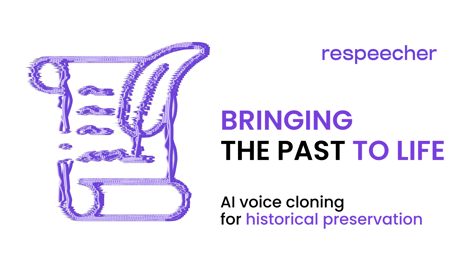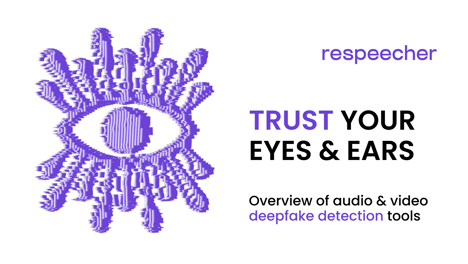Penetration Testing and Security Vulnerabilities of Voice Recognition Technologies

As synthetic media and voice recognition technologies become more pervasive and integrated into our daily lives, the potential security risks associated with them are also on the rise. From virtual assistants like Alexa and Siri to smart speakers and car audio systems, voice recognition technologies, powered by gen AI, are vulnerable to a range of security vulnerabilities that hackers and cybercriminals are just waiting to exploit.
This blog post will explore the importance of penetration testing for voice recognition technologies and the various security vulnerabilities that this process uncovers. We will also discuss how to mitigate these vulnerabilities to ensure the security and privacy of users who rely on these technologies and synthetic media daily. Additionally, it will shed light on the evolving role of AI voice generators, emphasizing the need for robust security measures to safeguard against potential misuse or manipulation.
Introduction to voice ID systems
Voice ID systems, also known as voice biometrics, are a form of technology that uses an individual's unique voice characteristics to identify them. Voice ID systems are based on the premise that each person's voice has distinct and recognizable features, such as pitch, tone, and rhythm, which can be analyzed and used to create a unique voiceprint or voice signature.
Voice ID systems have enjoyed a rise in use throughout various industries, including finance, healthcare, and law enforcement, for applications such as authentication, fraud detection, and access control over the past decade. They offer a secure and convenient method of identifying individuals, as they do not require physical contact or the use of a password or PIN, which can be forgotten, stolen, or hacked.
While voice ID systems have been around for several decades, recent advancements in generative AI and machine learning have made them more accurate and reliable. However, concerns have been raised about the potential misuse of voice data and the invasion of privacy. As such, addressing AI ethics is crucial in the development and implementation of voice biometrics, with adequate safeguards and regulatory oversight to protect the rights and interests of individuals.
Advantages of voice ID systems
Voice ID systems offer several advantages over traditional methods of identification and authentication, including:
- Security. Voice ID systems are highly secure with their ability to identify an individual's unique vocal characteristics that cannot be easily replicated or faked.
- Convenience. Voice biometrics offer a convenient method of identification as individuals do not have to remember complex passwords or carry physical tokens such as ID cards or keys.
- Cost-efficiency. Voice ID systems are cost-effective compared to traditional methods of identification as they do not require the use of expensive hardware or the creation and distribution of physical tokens.
- Non-intrusive. Voice biometrics do not require physical contact, making them a non-intrusive method of identification that is ideal for situations where hygiene is a concern, such as in healthcare settings.
- Accuracy. With advancements in artificial intelligence and machine learning, and AI voice cloning, the accuracy and reliability of voice ID systems now fulfill and comply with specific industry standards for security systems.
Vulnerabilities of voice ID systems
While voice recognition technologies offer many advantages, they are also vulnerable to various security threats and limitations, including:
- Impersonation attacks. An attacker, leveraging an AI voice generator or other techniques, impersonates an individual's voice to gain access to sensitive information or resources.
- Environmental noise. Voice recognition technologies are less reliable when affected by environmental noise, such as background sounds or other people talking.
- Voice quality changes. Changes in a person's voice due to illness, injury, or aging can affect the accuracy of voice recognition systems.
- False acceptances. Voice recognition systems sometimes falsely verify a speaker's voice (and reject the voice of an authorized party), which can result in unauthorized access to sensitive data or resources.
- Privacy concerns. Voice ID systems raise concerns over privacy as they collect and store biometric data, such as voiceprints, which can be misused through the use of AI voice cloning or accessed by unauthorized parties.
- Limited diversity. Some voice recognition technologies may struggle to accurately identify speakers with certain accents, dialects, or speech impediments.
- Integration with other systems. Integrating voice recognition systems with other software or hardware can create potential vulnerabilities in those systems.
These types of vulnerabilities are exploitable by hackers using various techniques to fool biometric voice systems, including using a recorded voice, a computer-altered voice, a synthetic voice, or voice cloning.
In October 2016, the BBC reported that they were able to fool the voice recognition security system of HSBC, one of the largest banks in the world. In their investigation, BBC reporter Dan Simmons conducted an experiment where he recorded his own voice and the voice of his twin brother, Joe, who has a similar voice.
Dan Simmons then registered his voice with HSBC's voice recognition security system and subsequently tried to access his account by imitating his brother's voice. To his surprise, he was able to successfully access the account using his brother's voice. This scenario highlights the importance of ongoing advancements in AI ethics to address emerging challenges, such as identity fraud and unauthorized access to sensitive information through voice manipulation.
HSBC responded to the BBC's experiment by stating that its voice recognition system was not designed to identify identical twins and that this particular procedure was only one of several authentication methods used by the bank to verify customers' identities. The bank also stated that it continually reviews and updates its security measures to address emerging threats, including those posed by AI voice generators.
Enhancing biometric security with penetration testing
Penetration testing, also known as pen testing, is a security testing methodology used to identify vulnerabilities and weaknesses in a system or network. Penetration testing involves simulating real-world attacks on a system or network to identify weaknesses that attackers could exploit.
Pen testing aims to identify vulnerabilities before attackers can exploit them and to provide recommendations for improving the security of a system or network. The process is comprised of a few steps:
- Defining the scope of the penetration testing, including the systems or network components to be tested, the goals of the testing, and the methods to be used.
- Gathering information about the target system or network.
- Scanning the target system or network for vulnerabilities.
- Exploiting vulnerabilities that are identified in the scanning phase.
- Generating a report that summarizes the findings of the pen testing.
The testing can be performed by in-house security teams or by external security companies. Pen testing plays a critical role in an organization’s overall security strategy and should be performed on a regular basis to ensure that security measures are effective and up to date.
Benefits of pen testing for voice recognition/voice ID systems
Penetration testing can provide several benefits to voice recognition or voice ID systems, including:
- Identifying vulnerabilities
- Assessing system effectiveness
- Meeting compliance requirements
- Providing recommendations
- Reducing the risk of a security breach
Overall, penetration testing plays a critical role in improving the security of voice recognition or voice ID systems and ensuring that they are effective in preventing unauthorized access.
How does Respeecher’s voice cloning technology help voice ID pen testing?
Respeecher's gen AI-powered voice cloning technology improves the voice ID pen testing process with real-time voice cloning. This technology puts voice recognition systems through their paces by testing their ability to identify synthetic voices and mitigate voice cloning attacks.
With Respeecher's gen AI technology, security researchers can generate synthetic voices that closely resemble the voices of legitimate users. This can help simulate a voice cloning attack, where an attacker attempts to impersonate a legitimate user by using a synthetic voice that sounds similar to the user's voice.
By integrating Respeecher's ethical voice cloning technology into pen testing, security researchers can identify vulnerabilities in their voice recognition systems, such as those that may allow an attacker to bypass the authentication process by using a synthetic voice.
Respeecher's technology tests the resilience of a voice recognition system against various types of synthetic voices, including voices that are altered or synthesized using different techniques. Additionally, the technology contributes to the assessment of potential risks associated with synthetic media within voice recognition systems.
We believe that our gen AI-powered voice cloning technology is a valuable tool for voice ID pen testing, helping security researchers identify vulnerabilities in voice recognition systems and synthetic media, ultimately enhancing the integrity of their security systems.
FAQ
Voice recognition technologies are subject to impersonation attacks, voice cloning attacks, ambient noise, and privacy attacks. Voice clones can be achieved using AI voice generators and synthetic media, and can replicate voices. Systems may also experience false acceptances or errors due to variability in voice quality.
Penetration testing helps to discover voice ID system security weaknesses by simulating attacks, such as voice cloning and voice conversion, to check for vulnerabilities. The exercise makes systems AI-immune to voice technology misuse and secure biometric authentication techniques.
Generative AI and AI-based voice generators are central to voice recognition security enhancement and testing. They are capable of generating synthetic speech or voice cloning attacks that test the system's defenses. But AI ethics is crucial in ensuring these technologies are responsibly used in secure environments.
Respeecher voice cloning technology enables penetration testing by simulating voice cloning attacks with the help of AI voice synthesizers to generate synthetic voices. This allows security professionals to effectively test the susceptibility of voice recognition systems to impersonation using very realistic cloned voices.
While voice cloning attacks are difficult to totally eliminate, the use of advanced voice ID systems, biometric verification, and penetration tests on a periodic basis will make security stronger. The use of generative AI and voice technology using AI aids in developing better systems to deflect such attacks.
Voice ID systems, leveraging voice biometrics and AI voice technology, deliver secure, non-invasive modes of verification. They are easy to use, affordable, and trustworthy, and offer every application a customized security solution, for example, biometric authentication and anti-fraud.
Organizations can defend themselves against voice recognition technology vulnerabilities through repeated penetration testing, investment in high-end voice biometrics, and use of AI ethics to safeguard data privacy. Investment in more effective defense against synthetic speech detection and voice cloning defense is also important.
Current voice ID systems are also marred by the issue of susceptibility to voice cloning attacks, inability to handle external noise, and voice quality inconsistency due to illness or old age. The systems also suffer from issues with different accents or dialects and require constant updating to fight evolving threats.
Glossary
Voice recognition technologies
Penetration testing
Voice biometrics
Synthetic media
AI voice generators

- voice synthesis
- voice cloning
- synthetic media
- artificial intelligence
- AI voice synthesis
- artificial intelligence (AI)
- voice synthesizing technology
- voiceover
- AI voice
- voice cloning software
- ethical voice cloning
- AI voices
- Voices
- Respeecher
- voice cloning speech synthesis
- Ethics
- Speech
- voice synthesizer
- AI-powered algorithms
- Voice cloning and conversion technology
- AI voice generator
- Respeecher’s synthetic voices
- speech-to-speech voice synthesis
- voice synthesis software
- AI-powered algorithm
- STS voice synthesis
- AI technology
- voice phishing
- Pen testing
- penetration testing
- voice ID systems
- Voice recognition technologies
- Voice recognition systems
- generative AI
- AI voice cloning
- AI Ethics
- voice ai
- AI voice clonning
- gen AI





